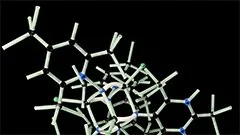Introduction
Chromosomes are fundamental structures within the nucleus of eukaryotic cells, responsible for carrying genetic information in the form of DNA. This course aims to provide a comprehensive and detailed understanding of chromosomes, their structure, replication, and role in cell division.
Key Concepts
- The basic unit of chromatin
- Chromosome number, karyotype, and heterochromatin
- Euchromatin and heterochromatin differentiation
- Chromosome condensation during cell division
- Replication and segregation of chromosomes
- Role of centromeres and telomeres
- Chromosome aberrations and their implications
Structure of Chromosomes
The Basic Unit of Chromatin
Understanding the structure of chromosomes begins at the most fundamental level: the basic unit of chromatin. Chromatin is a complex of DNA, proteins (histones), and other non-histone proteins that packages the genetic material within the nucleus of eukaryotic cells. The structural organization of chromatin allows for efficient packing while preserving accessibility to genetic information.
Chromosome Number, Karyotype, and Heterochromatin
Each species has a characteristic number of chromosomes, known as the diploid or 2n number. For example, humans have 23 pairs of autosomal chromosomes (for a total of 46) and one pair of sex chromosomes (X and Y). The karyotype is a standardized description of an organism's chromosome complement. Heterochromatin refers to regions within the chromosome that are highly condensed and inaccessible for gene expression, typically found at the centromere and telomeres.
Euchromatin and Heterochromatin Differentiation
Euchromatin is the less densely packed and more accessible form of chromatin that actively participates in gene expression. In contrast, heterochromatin is compacted and transcriptionally inactive. The differentiation between euchromatin and heterochromatin is essential for regulating gene expression and various cellular processes.
Chromosome Condensation During Cell Division
During the cell cycle, chromosomes undergo a series of structural changes as they prepare for replication and division. The most notable change occurs during prophase, when chromatin condenses into visible chromosomes. This process allows for accurate segregation during mitosis or meiosis.
Replication and Segregation of Chromosomes
The duplication and separation of chromosomes is a critical aspect of the cell cycle. Chromosome replication begins at the origin of replication, where DNA polymerase synthesizes new strands using the existing strand as a template. Once replicated, sister chromatids remain attached at the centromere until anaphase, when they are pulled apart by the spindle fibers during mitosis or meiosis.
Role of Centromeres and Telomeres
Centromeres are specialized regions that facilitate the attachment of chromosomes to the spindle apparatus during cell division. Telomeres are repetitive DNA sequences located at the ends of chromosomes, protecting them from degradation and preventing fusion with other chromosomes.
Chromosome Aberrations and Their Implications
Chromosome aberrations can arise from errors in replication, cell division, or exposure to mutagens. These abnormalities can have severe consequences on the phenotype of an organism, leading to genetic disorders and cancer. Understanding chromosome aberrations is essential for diagnosing genetic diseases and developing strategies for their treatment or prevention.
Conclusion
The study of chromosomes provides valuable insights into the fundamental mechanisms governing genetics and cellular processes in eukaryotes. By understanding the structure, replication, and role of chromosomes, we can appreciate the intricacies of genetic information transmission and its implications for health and disease. This course serves as a foundation for further exploration of molecular biology and genetics.
MCQ: Test your knowledge!
Do you think you know everything about this course? Don't fall into the traps, train with MCQs! eBiologie has hundreds of questions to help you master this subject.
These courses might interest you
Create a free account to receive courses, MCQs, and advice to succeed in your studies!
eBiologie offers several eBooks containing MCQ series (5 booklets available free for each subscriber).



